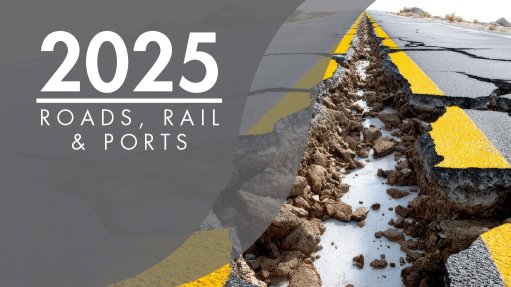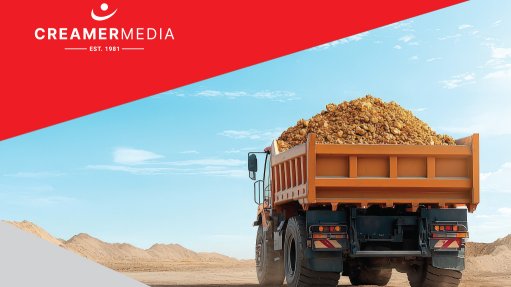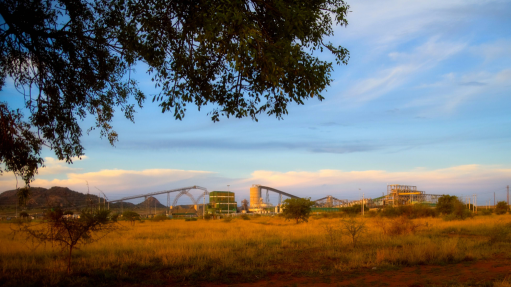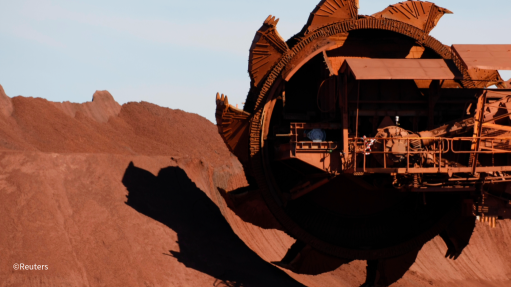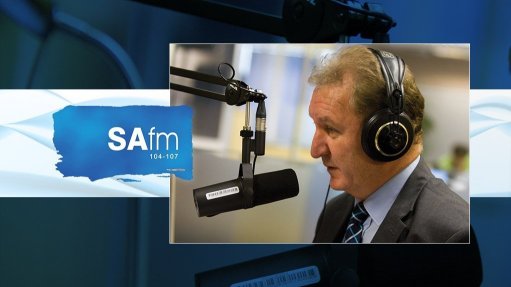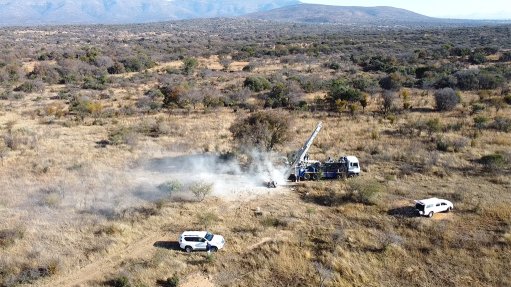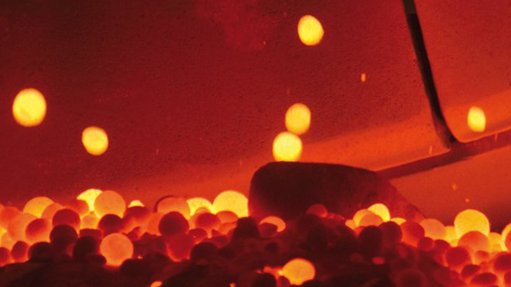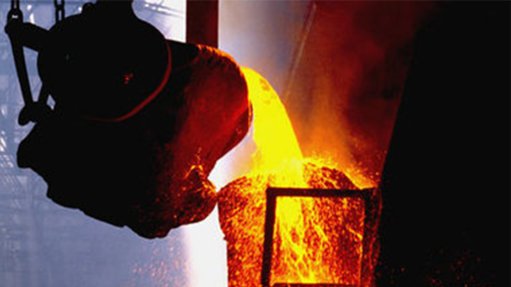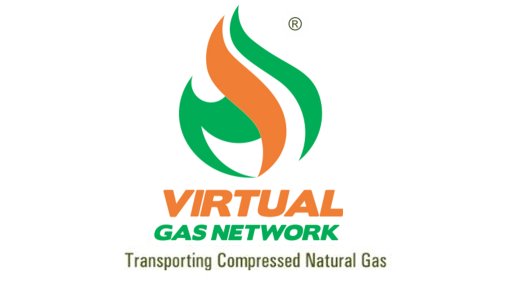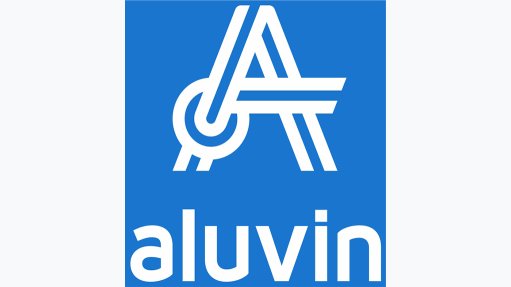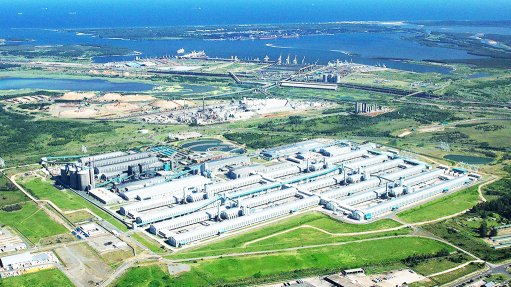Kumba posts lower earnings, dividend as steel demand weakened in 2024
Anglo American subsidiary Kumba Iron Ore has reported a 17% lower total dividend for the year ended December 31, on the back of steel market and iron-ore pricing dynamics.
The company’s total dividend of R38.67 compares with a total dividend of R46.80 declared in the prior year.
The company’s basic headline earnings per share (HEPS) decreased by 45% year-on-year to R38.94 compared with basic HEPS of R70.80 in the prior year.
Iron-ore production was similar to that of the prior year at 35.7-million tonnes, while export sales were 2% lower year-on-year at 36.2-million tonnes. The Sishen mine’s production increased by 1% year-on-year to 25.7-million tonnes, while Kolomela mine's production decreased by 2% year-on-year to 10.1-million tonnes.
CE Mpumi Zikalala says Kumba managed to improve its operational excellence in the year under review, having delivered a record 22% improvement in its total recordable injury frequency rate to 0.76.
She explains that Kumba’s business reconfiguration and proactive cost optimisation has realised savings of R4.4-billion, as well as resulted in an improvement in C1 unit costs by 5% year-on-year to $39/t, which contributed positively to the company’s adjusted earnings before interest, taxes, depreciation and amortisation (Ebitda) of R28.1-billion in the year – at an adjusted Ebitda margin of 41%.
The company’s adjusted Ebitda and margin amounted to R45.7-billion and 53%, respectively, in the prior year.
Kumba realised an average free-on-board export price of $92/t in the year under review, which was 3% above the average 62% iron benchmark export price of $89/t.
Zikalala deems the reporting year as one where Kumba delivered a resilient performance, having completed a business reconfiguration process that included a reset of mine plans across the business to a lower production profile more aligned to rail export capacity.
She adds that Kumba is now a rightsized and more resilient business aligned with export capabilities and market factors, with the company being able to ramp up production quickly if necessary.
In addition to an attributable free cash flow of R14.5-billion having been generated in the reporting year, Kumba created R57.3-billion of enduring shared value to the benefit of South Africans through taxes, royalties, wages, shareholder payments and empowerment partners.
Zikalala says Kumba procured R17.3-billion worth of goods and services from black economic empowerment suppliers, including more than R3.9-billion from local host community suppliers. The company also spent R469-million on social development projects and facilitated more than 3 000 jobs across a number of sectors outside the mining industry, including agriculture, hospitality, manufacturing and tourism.
Kumba’s net cash at the end of the year stood at R14.7-billion.
MARKET VIEW
Iron-ore supply outpaced steel demand in the reporting year, resulting in a sharp decrease in iron-ore prices. However, demand for lump was underpinned by successive rounds of metallurgical coal price cuts, she explains.
The Platts 62 Iron-Ore Index price averaged $109/t in the year under review, compared with $120/t in the prior year. Kumba says strong exports partially offset weak domestic demand; however, China’s crude steel production decreased by 1.5% to one-billion tonnes in 2024 and finished steel exports increased by 22% to 111-million tonnes.
China’s property sector, which is a key driver of steel demand, remains weak while it undergoes deleveraging and policy support towards recovery. During the year, new housing starts and completions decreased by 23% and 28%, respectively.
Industrial activities in China were also below expectations during most of the year, before Chinese monetary easing and pledged fiscal spending boosted market sentiment in the last quarter.
Weak end-user demand and uncertainty in the economic outlook resulted in overall lower steel prices through most of 2024, Kumba states, adding that this year should see more fast-tracked projects in China that support higher steel prices.
Persistent weak demand and compressed margins also characterised markets outside of China during the reporting year, with only modest steel production improvements recorded in some regions.
Global markets outside of China, particularly in Europe, were under pressure owing to low steel demand. Kumba’s sales to these markets fell to 46% of total sales from 49% of total sales.
Within the EU, Middle East, North America and Americas region, Kumba’s sales decreased to 24% in the year, from 29% in the prior year.
OPERATIONS
Kumba owns and operates the Sishen and Kolomela mines in the Northern Cape.
The company completed the Kapstevel South project at the Kolomela mine in the year under review, having delivered first ore from the site in June 2024.
At Sishen, the board approved continued investment in Kumba’s ultra-high-dense-media separation (UHDMS) technology project. The investment will be phased over five years and is expected to generate an Ebitda margin of more than 50%.
The technology positions Kumba more sustainably by securing Sishen’s life-of-asset and offering the potential to extend its mine life to 2044.
As steel production shifts to carbon-light steelmaking, demand for direct change materials such as Kumba’s high-quality iron-ore lump will grow. The UHDMS technology trebles the proportion of premium iron-ore produced at Sishen, which ensures that Kumba can continue playing a key role in the green steel value chain.
Zikalala confirms that the company is working closely with State-owned Transnet as part of the Ore User’s Forum, as well as through the National Logistics Crisis Committee, to restore capacity of the iron-ore export corridor which spans from Sishen to Saldanha Bay, in the Western Cape.
ENVIRONMENT
Kumba continued its solid record of no high-level environmental incidents for nine consecutive years while it has rehabilitated 313 ha of land at Sishen and 189 ha of land at Kolomela, which helps to introduce cattle farming, lodging and sustainable agriculture in the area.
The company’s total energy consumption decreased by 20% year-on-year to seven-million gigajoules in the year under review, with greenhouse-gas emissions having decreased by 13% year-on-year to 839 000 t of CO2 equivalent. Kumba has been reducing its waste mining and rightsizing its heavy mobile equipment fleet in this regard.
Kumba remains on track with its decarbonisation pathway to reduce Scope 1 and 2 emissions by 30% by 2030, and reduce Scope 3 emissions by 50% by 2040, compared with a 2016 baseline.
A planned solar PV plant at Sishen will reduce Scope 2 carbon emissions by about 33% while a combination of wind and solar projects wheeled to Kolomela will reduce the site’s Scope 2 emissions by about 85%.
Kumba is also cognisant of its sustainable use of water, having decreased its freshwater withdrawal rate by 7% to 7 230 megalitres in the year under review. the company also supplied 17 526 megalitres of water to the broader Northern Cape region for domestic and industrial consumption.
Article Enquiry
Email Article
Save Article
Feedback
To advertise email advertising@creamermedia.co.za or click here
Press Office
Announcements
What's On
Subscribe to improve your user experience...
Option 1 (equivalent of R125 a month):
Receive a weekly copy of Creamer Media's Engineering News & Mining Weekly magazine
(print copy for those in South Africa and e-magazine for those outside of South Africa)
Receive daily email newsletters
Access to full search results
Access archive of magazine back copies
Access to Projects in Progress
Access to ONE Research Report of your choice in PDF format
Option 2 (equivalent of R375 a month):
All benefits from Option 1
PLUS
Access to Creamer Media's Research Channel Africa for ALL Research Reports, in PDF format, on various industrial and mining sectors
including Electricity; Water; Energy Transition; Hydrogen; Roads, Rail and Ports; Coal; Gold; Platinum; Battery Metals; etc.
Already a subscriber?
Forgotten your password?
Receive weekly copy of Creamer Media's Engineering News & Mining Weekly magazine (print copy for those in South Africa and e-magazine for those outside of South Africa)
➕
Recieve daily email newsletters
➕
Access to full search results
➕
Access archive of magazine back copies
➕
Access to Projects in Progress
➕
Access to ONE Research Report of your choice in PDF format
RESEARCH CHANNEL AFRICA
R4500 (equivalent of R375 a month)
SUBSCRIBEAll benefits from Option 1
➕
Access to Creamer Media's Research Channel Africa for ALL Research Reports on various industrial and mining sectors, in PDF format, including on:
Electricity
➕
Water
➕
Energy Transition
➕
Hydrogen
➕
Roads, Rail and Ports
➕
Coal
➕
Gold
➕
Platinum
➕
Battery Metals
➕
etc.
Receive all benefits from Option 1 or Option 2 delivered to numerous people at your company
➕
Multiple User names and Passwords for simultaneous log-ins
➕
Intranet integration access to all in your organisation







